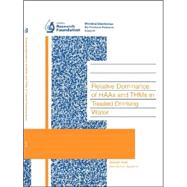|
ix | ||||
|
xiii | ||||
| Foreword | xxvii | ||||
| Preface | xxix | ||||
| Acknowledgments | xxxi | ||||
| Executive Summary | xxxiii | ||||
|
1 | (6) | |||
|
1 | (1) | |||
|
1 | (2) | |||
|
3 | (1) | |||
|
4 | (3) | |||
|
7 | (54) | |||
|
7 | (1) | |||
|
8 | (1) | |||
|
8 | (4) | |||
|
10 | (1) | |||
|
11 | (1) | |||
|
12 | (13) | |||
|
12 | (4) | |||
|
16 | (9) | |||
|
25 | (34) | |||
|
25 | (16) | |||
|
41 | (2) | |||
|
43 | (1) | |||
|
44 | (3) | |||
|
47 | (2) | |||
|
49 | (3) | |||
|
52 | (2) | |||
|
54 | (5) | |||
|
59 | (2) | |||
|
61 | (76) | |||
|
61 | (1) | |||
|
61 | (16) | |||
|
61 | (3) | |||
|
64 | (1) | |||
|
64 | (2) | |||
|
66 | (2) | |||
|
68 | (2) | |||
|
70 | (7) | |||
|
77 | (56) | |||
|
77 | (2) | |||
|
79 | (3) | |||
|
82 | (2) | |||
|
84 | (40) | |||
|
124 | (9) | |||
|
133 | (4) | |||
|
137 | (34) | |||
|
137 | (1) | |||
|
138 | (1) | |||
|
138 | (1) | |||
|
139 | (4) | |||
|
140 | (1) | |||
|
141 | (1) | |||
|
142 | (1) | |||
|
143 | (22) | |||
|
143 | (1) | |||
|
144 | (3) | |||
|
147 | (7) | |||
|
154 | (11) | |||
|
165 | (6) | |||
|
171 | (28) | |||
|
171 | (1) | |||
|
171 | (2) | |||
|
172 | (1) | |||
|
173 | (1) | |||
|
173 | (23) | |||
|
173 | (2) | |||
|
175 | (18) | |||
|
193 | (3) | |||
|
196 | (3) | |||
|
199 | (40) | |||
|
199 | (1) | |||
|
199 | (2) | |||
|
201 | (11) | |||
|
201 | (2) | |||
|
203 | (1) | |||
|
203 | (2) | |||
|
205 | (1) | |||
|
206 | (5) | |||
|
211 | (1) | |||
|
212 | (27) | |||
|
212 | (1) | |||
|
212 | (3) | |||
|
215 | (13) | |||
|
228 | (11) | |||
|
239 | (12) | |||
|
239 | (1) | |||
|
239 | (2) | |||
|
241 | (9) | |||
|
250 | (1) | |||
|
251 | (6) | |||
|
251 | (1) | |||
|
252 | (1) | |||
|
253 | (1) | |||
|
254 | (1) | |||
|
254 | (1) | |||
|
255 | (1) | |||
|
256 | (1) | |||
| Appendix A: procedure for HAA9 Analysis | 257 | (6) | |||
| Appendix B: Data for HAA9 Stability in water | 263 | (4) | |||
| Appendix C: Data for Stability of HAA9 in presence of free chlorine | 267 | (4) | |||
| Appendix D: Data for HAA9 Stability in Presence of Quenching Agents | 271 | (10) | |||
| References | 281 | (12) | |||
| Abbreviations | 293 |








